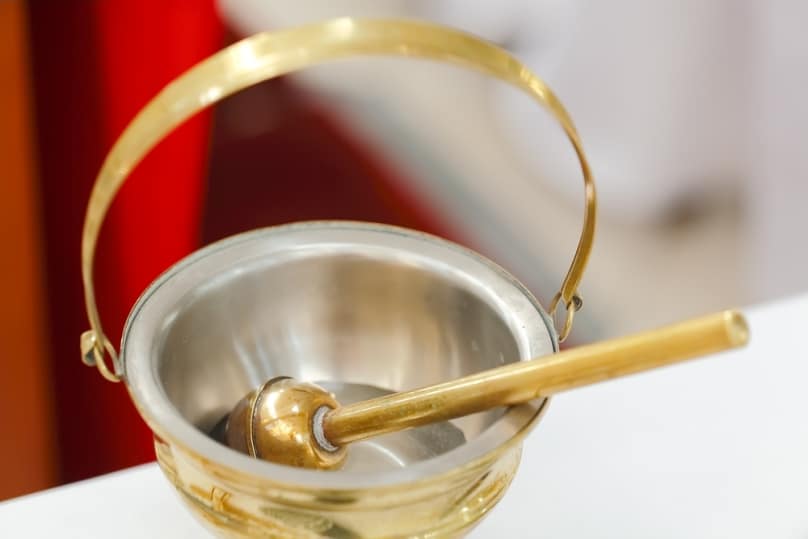
Dear Father, Can you please tell me the difference between Easter water and holy water?
Holy water has a long history, going back to the Old Testament. In the book of Numbers, for example, we read that if a woman has been unfaithful to her husband, he is to take her to the priest “and the priest shall take holy water in an earthen vessel, and take some of the dust that is on the floor of the tabernacle and put it into the water” (Num 5:17).
Later the woman is to drink the water by way of purification (cf. Num 5:17-28).
Also, whenever the Israelites entered the Temple, they were to undergo a rite of purification by immersion in a mikvah, a ritual bath. Orthodox Jews today use the mikvah in the rite of conversion to Judaism, on the feast of Yom Kippur and on many other occasions. These ritual purifications prefigure Christian Baptism, which purifies us from original sin and personal sin.
Following this ancient tradition, as a reminder of our baptism and by way of purifying ourselves we sprinkle ourselves with holy water on entering a church.
A more formal rite is the Asperges, the sprinkling of the people with holy water by the priest at the beginning of Mass on Sundays, as provided for in the Roman Missal.
We see its meaning in one of the formulas of blessing of the water where the priest says: “Almighty ever-living God, who willed that through water, the fountain of life and the source of purification, even souls should be cleansed and receive the gift of eternal life; be pleased, we pray, to bless this water, by which we seek protection on this your day, O Lord. Renew the living spring of your grace within us and grant that by this water we may be defended from all ills of spirit and body, and so approach you with hearts made clean and worthily receive your salvation.”
The reference to “the living spring of your grace” recalls Our Lord’s conversation with the Samaritan woman at the well.
He tells her that “whoever drinks of the water that I shall gave him will never thirst; the water that I shall give him will become in him a spring of water welling up to eternal life” (Jn 4:13-14).
In this same sense one of the prayers for the blessing of holy water says: “Blessed are you, Lord, all-powerful God, who in Christ, the living water of salvation, blessed and transformed us. Grant that, when we are sprinkled with this water or make use of it, we will be refreshed inwardly by the power of the Holy Spirit and
continue to walk in the new life we received at baptism.”
In these blessings we see the two main purposes of using holy water, which remind us of the principal effects of baptism: to purify us of our sins and to renew in us the life of grace.
Apart from its use to bless ourselves when we enter a church, holy water is also used in most blessings, being sprinkled on the object blessed, whether liturgical vestments, wedding rings, a car, a home, etc.
Likewise it is used in exorcisms and other rites as a protection against the powers of evil.
It is customary for the faithful to take holy water home, where they may bless themselves with it on entering the house, bless their children by making the sign of the cross on their forehead with it on tucking them into bed, sprinkle it on their bed before retiring, etc.
Easter water is the water the priest blesses during the Easter Vigil ceremony to be used for the baptism of catechumens and for sprinkling on all those in the congregation as a reminder of their baptism.
It is simply holy water blessed on this special occasion.
The long and rich prayer of blessing of this water recalls the many times water appears in the Scriptures: at creation when the Spirit hovered over the waters, at the flood, at the Israelites’ passing through the Red Sea, at the baptism of Christ and at his death, when water flowed from his side, and when he sent the apostles out to baptise.
At the end of the blessing the priest immerses the Easter candle, which represents Christ the light of the world, three times into the water, symbolising his death and resurrection.
The priest also breathes over the water, symbolising the Holy Spirit coming down upon it.
In some countries it is traditional for the people to take some of the Easter water home where they will use it to bless their homes and some of the special foods prepared for the Easter meal.
In any case we can always take it home to use as holy water, remembering its rich history and deep meaning.
